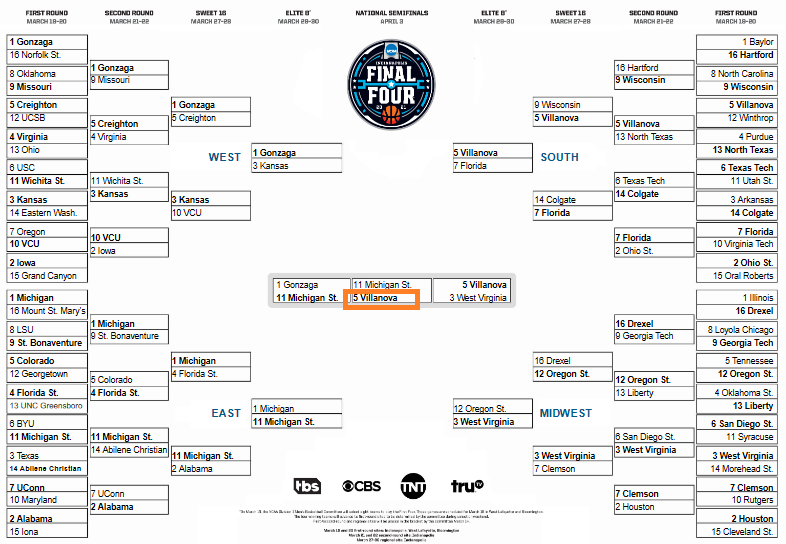You have /5 articles left.
Sign up for a free account or log in.
After a temporary hiatus due to the pesky little pandemic that turned the world upside down almost exactly a year ago, the National Collegiate Athletic Association’s Division I men’s basketball tournament resumes this week. Sixty-eight college teams will vie to be crowned champion at the highest level of intercollegiate basketball.
Also making its return after a one-year break is Inside Higher Ed’s own annual tradition at this time of year. Our Academic Performance Tournament plays out the actual competitive bracket as if the outcome of each game was determined not by a mix of skill, teamwork and strategy but by comparing the teams’ academic performance.
Forgive us this little flight of fancy. It’s quaint, we know, but we like to pretend that academics matter and to give just a little attention (amid the gobs paid to the actual outcome of games by sports fanatics and even casual bracket bettors) to the colleges and universities whose basketball players score well using the NCAA’s modest metrics for ensuring that college athletes are students, too.
We first match the teams based on the 2018-19 academic progress rate, the NCAA's multiyear measure of a team's academic performance. (Among other things, the APR excludes athletes who leave in good academic standing, so high-octane programs where players tend to go pro early can still fare well on the measure.)
When two teams tie going head to head on the APR, we turn to the NCAA's graduation success rate for 2019-20, which measures the proportion of athletes who graduated within six years of entering the institution. (The graduation success rate also excludes athletes who leave the institution in good academic standing, and credits programs for players who transfer in and go on to graduate from the institution. As a result, the rates on average are significantly higher than the federal graduation rate, the formula the federal government uses to track graduation rates for all students.)
Only if two teams tie on both of those metrics do we break the tie using the federal graduation rate for 2019.
A quirk about this year’s results: while we often don’t know the outcome of our bracket until we play out all the matchups, the winner of Inside Higher Ed’s academic bracket was easier to surmise from the start. Unlike in most years, only one team that qualified for the NCAA men’s tournament this year had a perfect 1000 on the NCAA’s Academic Progress Rate, so it was the inevitable winner, outperforming whoever it went up against. (For what it’s worth, only 12 of the 353 Division I men’s basketball teams had perfect 1000 scores this year, about 50 percent less than most previous years. And only one of those 12 teams -- our winner -- made the NCAA tournament.)
And the winner is … Go ahead, click to find out yourself.






